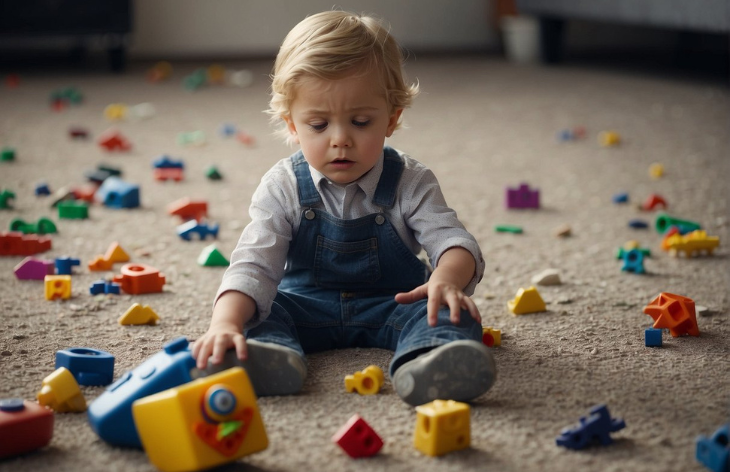Discovering your child destroying toys or household items can be distressing. It’s a common phase many children go through, but understanding why this happens is crucial. Could it be a form of expression, a developmental stage, or something more? Let’s explore this destructive behavior to find answers and effective responses.
Key Takeaways
- Children may destroy property as a means of exploration or communication.
- Consistent and understanding parenting can help manage negative behavior.
- Professional help should be sought if the actions persists and intensifies.
Shannon’s Take
One thing I’ve found helpful is to redirect their energy and curiosity into constructive activities. For instance, provide them with play-dough to smash or old magazines to tear. It’s all about guiding their desire to manipulate objects in a positive direction, without stifling their exploration. Also, consistency in your responses to their actions is key. Setting and communicating clear boundaries in a calm and assertive way helps children learn what’s acceptable.
Moreover, it’s beneficial to spend some time reflecting on the potential reasons behind this conduct. Are they seeking attention, expressing frustration, or do they simply enjoy the sensory feedback? By understanding the root cause, you can address the behavior more effectively and help your child learn better ways to express their feelings and curiosity.
It’s crucial not to label them as ‘destructive’ or ‘naughty’. These labels can stick and negatively affect their self-esteem. Instead, guide them with love and patience, acknowledging it’s a normal stage for many children. Your understanding and support can make a big difference in how they express their inquisitiveness.
Understanding Why Kids Resort to Destructive Behavior
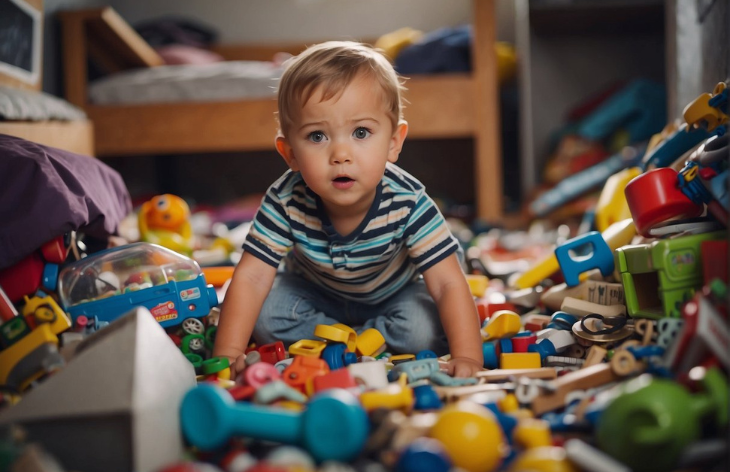
Negative actions in children can be perplexing and concerning. It’s crucial to recognize that such actions often signify underlying issues rather than mere disobedience.
Exploring the Causes of An Outburst
When your child engages in damaging behavior, such as destroying your home, it’s a visible signal that they’re struggling to cope with something. Common causes include:
- Environmental Influences: Stressful home dynamics or school pressures can trigger such actions.
- Developmental Stages: Toddlers and young children often test limits through destructive acts as part of their growth.
- Attention-Seeking: Many kids may break things to gain the attention of their parents or caregivers.
- Imitation: Observing similar actions from others could lead children to mimic it.
Identifying Psychological Factors
A deeper look into psychological factors can reveal:
- ADHD: Kids with Attention Deficit Hyperactivity Disorder (ADHD) may display impulsive behaviors, leading to unintentional destruction.
- Oppositional Defiant Disorder (ODD): Consistent patterns of angry and defiant behaviors, including destructiveness, may point towards Oppositional Defiant Disorder.
- Mood Disorders: Fluctuations in mood that seem extreme or persistent can result in harmful behavior.
- Conduct Disorder: This is a more severe condition, where patterns of behavior violate the basic rights of others and societal norms, including negative actions.
Understanding the root causes and psychological factors behind your child’s actions is the first step towards addressing this challenge and guiding them toward healthier ways of expressing their emotions and needs.
Practical Parenting Approaches
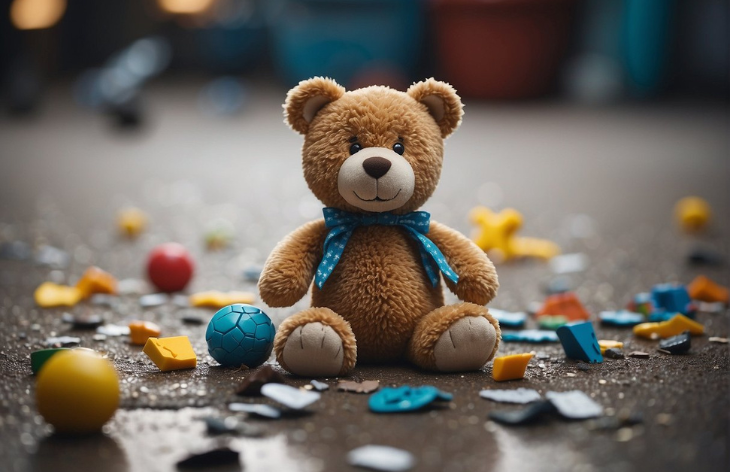
In addressing the concern of why a child might purposely destroy things, it’s essential to integrate strategies that not only address the behavior but also equip the child with appropriate coping mechanisms. The focus here is on establishing clear boundaries and natural consequences, as well as fostering essential coping skills and emotional regulation.
Establishing Boundaries and Natural Consequences
Boundaries are a crucial component of parenting. They help children understand their limits and the expectations you have for their behavior. When setting boundaries:
- Clearly explain the rules to your child using language they can understand.
- Be consistent in enforcing these rules to help your child internalize them.
Natural consequences allow your child to learn from their own actions. For instance:
- If a toy is broken during a tantrum, tell your child that the natural consequence could be that the toy is no longer available to play with.
- Guide your child to link the consequence directly with their action to underscore the lesson.
Fostering Coping Skills and Emotional Regulation
Children often get angry when they’re unable to cope with their emotions. To help your child develop coping skills:
- Model calm behavior during stressful situations.
- Teach deep breathing or counting to ten as techniques to remain calm.
Emotional regulation is a complex skill, but you can help your child progress by:
- Acknowledging their extreme feelings and validating their experiences.
- Showing them healthy ways to express emotions, such as talking about their feelings or using art.
By being patient and providing a supportive environment, you’re creating the foundation for your child to build these essential life skills.
When to Seek Professional Help When Kids Destroy Things
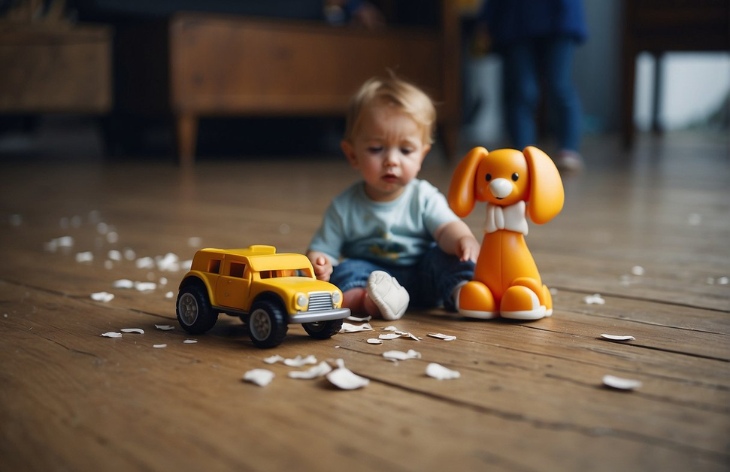
When your child exhibits damaging behavior, it can be concerning. This section will guide you on how to recognize signs that may indicate a need for professional intervention and how to go about consulting with specialists.
Recognizing the Signs
To ascertain whether your child’s actions warrant seeking professional help, vigilance is vital. Pay attention to these specific indicators:
- Persistence: Negative behavior that is frequent and persistent over time, rather than a one-time incident, may necessitate further evaluation.
- Intensity: If the destructiveness is intense or escalates quickly, it could signal underlying issues.
- Impact on Functioning: Notice if the behavior interferes with your kid’s daily life or relationships.
- Emotional Distress: Your child seems unduly upset or overwhelmed by emotions before or after the hostile acts.
Consulting With a Psychologist or Therapist
Once concerning behaviors are identified, reaching out to a psychologist or therapist can provide clarity and support:
- Initial Assessment: A professional can assess whether the behavior is developmentally appropriate or indicative of deeper concerns.
- Therapeutic Strategies: They provide tailored strategies to manage and mitigate aggressive tendencies.
To find a suitable professional:
- Seek referrals from your pediatrician.
- Check qualifications and experience specifically related to children’s behavioral health.
By acting promptly and involving appropriate therapeutic intervention, you can help address your kid’s destructive behavior effectively.
Creating a Supportive Home Environment
To address behaviors such as your child destroying things at home, creating a supportive home environment is vital. This involves promoting positive behaviors and encouraging physical play to support developmental growth.
Promoting Positive Behaviors
Establishing a routine can help your child to understand expectations and boundaries within the home. Clear rules about acceptable behavior and consistent consequences for breaking them provide structure, which is reassuring for children. Praise and reward systems can be effective in recognizing good behavior, such as not destroying objects, which in turn can promote a sense of achievement and self-worth in your child.
- Model Positive Behavior: Show how to treat objects with care.
- Positive Reinforcement: Use rewards for respecting the home.
- Consistency: Apply rules uniformly to build trust.
Encouraging Physical Activity
Physical activity plays a crucial role in your kid’s developmental process. Active play engages your child’s energy in constructive ways, reducing the likelihood of disruptive behavior. It can help with emotional regulation and provide an outlet for stress or frustration that might otherwise lead to them destroying things around the home.
- Scheduled Playtime: Set aside daily times for active play.
- Variety of Activities: Incorporate different physical activities to keep your child engaged.
- Participation: Join in to make physical activity a fun, bonding experience.
By focusing on these strategies within your supportive home environment, your child can learn to express themselves in healthier ways and develop respect for their surroundings.
Frequently Asked Questions
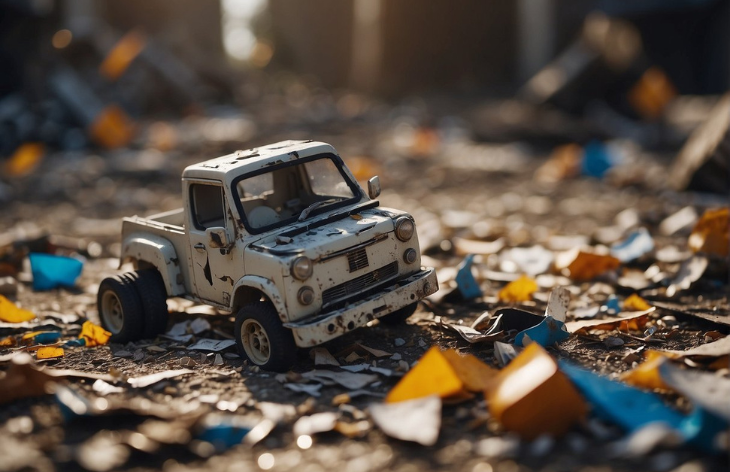
When your child destroys items, it’s essential to approach the situation calmly and with strategies that foster learning and personal growth.
How should parents manage a situation when their child intentionally breaks items?
If you find your child intentionally breaking things, address the incident immediately and calmly. Explain the consequences and importance of respecting belongings. Depending on the situation, it may be beneficial to involve your child in the clean-up or repair process to understand the implications of their actions. Engaging in a dialogue about emotions and finding alternative ways for your child to express feelings can be pivotal.
Is it common for children, such as 4-year-olds, to destroy objects when experiencing anger?
Yes, it’s common for young children, including 4-year-olds, to sometimes respond to anger or frustration by destroying objects. At this age, they’re still developing emotional regulation and may not have the words to express what they’re feeling. It’s crucial to guide them towards healthier outlets for their emotions during these outbursts.
Can consistent destructive behavior in a 7-year-old indicate underlying issues?
Continual destructive behavior by a 7-year-old could suggest underlying issues such as emotional distress, attention-seeking, or unmet needs. It can be beneficial to observe patterns in behavior and consult with a professional if the behavior persists, as they can offer strategies tailored to your child’s needs.
How is destructive behavior in children with ADHD best addressed by parents and caregivers?
Children with ADHD may display destructive behaviors as a result of impulsivity or frustration. To support them, establish clear and consistent rules, create structured routines, and provide immediate feedback on their behavior. Promoting activities that help them burn off excess energy and teaching coping skills for frustration might also help minimize incidents of destructive behavior.

